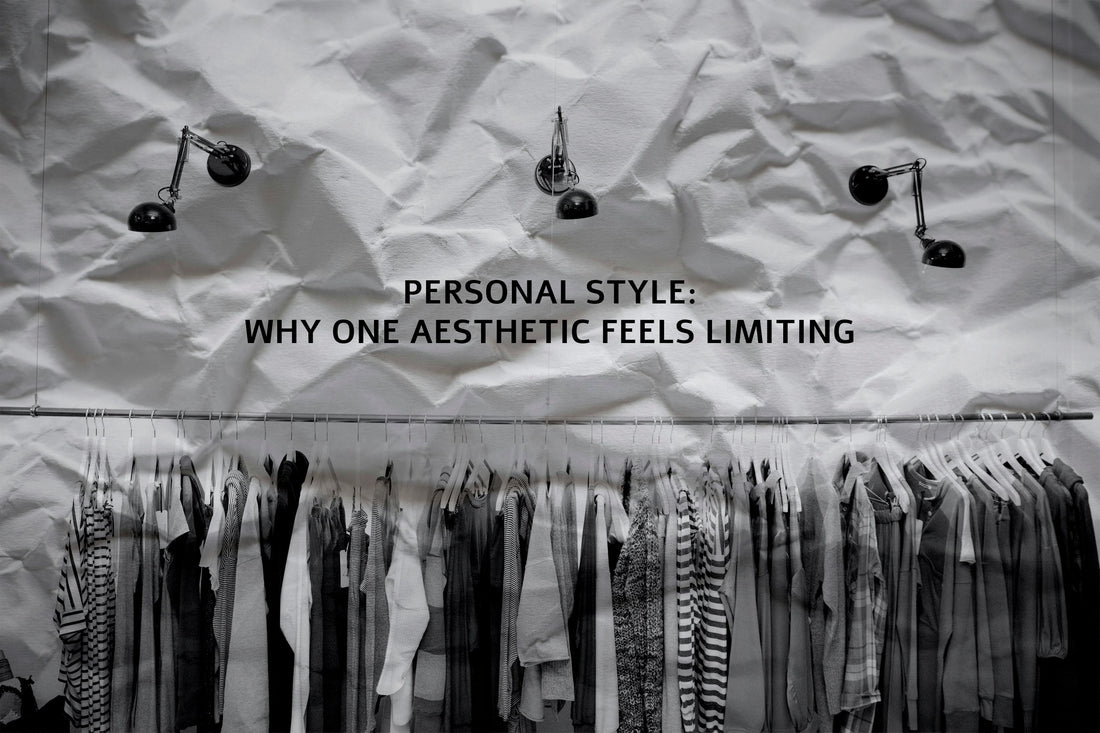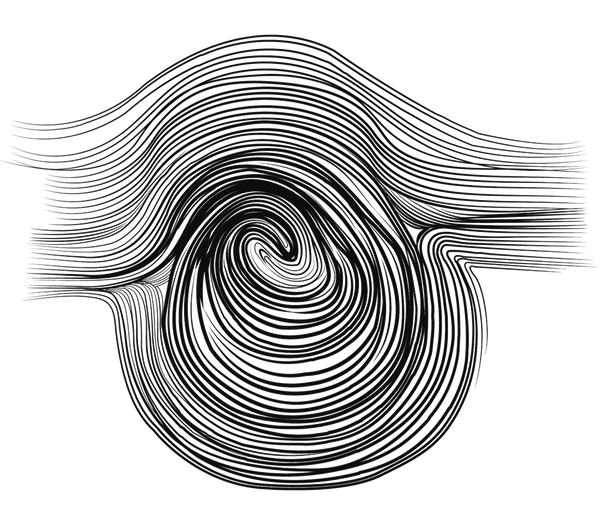
Personal Style: Why One Aesthetic Feels Limiting
Share
The Influence of Surroundings on Personal Style
Our surroundings significantly shape our personal style, often without us even realizing it. Social media, designed to capture and retain our attention, constantly bombards us with viral trends and aesthetics. This makes it difficult to distinguish between fleeting trends and genuine personal preferences. It’s easy to mistake attention-grabbing content for true inspiration, leading to aesthetic shifts that may not reflect our authentic selves.
However, social media is just one of many influences. The music we listen to, the movies and documentaries that resonate with us, our cultural background, and even our faith all contribute to our evolving style. Personal style is not about rigidly adhering to a single aesthetic but integrating these various influences into a unique and recognisable identity. For example, a friend who knows you well may recognise you not just by your physical features but by details like your makeup style (inspired by Dune), your earrings (traditional South Asian jhumkas passed down from your mother),and your choice of clothing (selected based on comfort and instinct rather than strict adherence to a trend). These subtle influences shape an organic, ever-changing personal style rather than a cookie-cutter replication of an established aesthetic.
Moreover, the changing seasons, travel experiences, and even shifting political and social landscapes can affect how we dress. A trip to a different country may introduce new textures, fabrics, or silhouettes that feel authentic to incorporate into daily wear. Likewise, movements advocating for sustainability and ethical consumption influence fashion choices, pushing individuals to seek out slow fashion brands or second-hand clothing.
The Evolution of Fashion and Identity
Fashion is not static; it evolves alongside personal growth. Factors such as newfound confidence, shifting values, and lifestyle changes all influence our clothing choices. For instance:
Choosing between a leather or vegan bag may reflect an ethical shift.
Wearing bolder statement pieces could signify growing confidence.
Adopting a new faith may encourage a preference for modest clothing, while moving away from religious constraints may inspire greater freedom.
Personal style is also affected by career changes, relationships, and personal milestones. A new job in a corporate environment might necessitate a wardrobe shift towards a formal and more uniform wardrobe, while stepping into a creative industry may encourage more experimental dressing. Entering different life stages such as becoming a parent or moving to a different climate can also influence wardrobe choices in both practical and aesthetic ways.
Understanding the distinction between personal evolution and external trends is key. While personal evolution stems from internal growth, trends are dictated by external forces shaping what is considered "cool." However, fashion evolution isn’t always voluntary. Workplace dress codes, for example, can impose restrictions that feel stifling, as in corporate settings where a suit and tie might be the only acceptable attire. In such cases, the challenge lies in maintaining a sense of personal expression within unavoidable limitations.
The Challenge of Compromise: Balancing Self-Expression and Professionalism Within Your Personal Style
Balancing authenticity and professionalism can be challenging, especially in industries with strict dress codes. Fashion-forward industries encourage individuality, whereas conservative fields may perceive self-expression as unprofessional. In corporate environments, standing out too much might result in a conversation with HR, while in fashion, bold self-expression is often well tolerated.
Navigating this requires strategic compromise rather than complete surrender. Instead of entirely conforming to restrictive norms, look for subtle ways to integrate your personal style within professional settings. Whether through accessories, fabric choices, or understated details, finding a balance between personal identity and societal expectations ensures that your style remains uniquely yours.
For instance, if bold prints and bright colors define your personal style but feel out of place in your workplace, you might incorporate them subtly through accessories like ties, scarves, or handbags. If you love alternative fashion but work in a corporate setting, details like unique cufflinks, nail polish, or an unconventional watch can help maintain a sense of individuality without breaking dress codes.
It’s also worth noting that some industries are slowly evolving in how they perceive professional dress. Tech startups, creative agencies, and freelance work environments often provide more flexibility, allowing for self-expression while maintaining professionalism.
The Emotional Connection to Fashion
Beyond practicality and trends, clothing is deeply tied to emotion and memory. The sentimental value of a piece a scarf knitted by a loved one, a vintage jacket found in a thrift store, or a dress worn during a milestone event can shape our style decisions. Fashion is not just about aesthetics but also about storytelling. The way we dress can reflect personal narratives, cultural heritage, or even a sense of nostalgia.
This emotional connection is why completely adhering to one aesthetic can feel restrictive. Personal style is dynamic because our emotions, experiences, and personal journeys are constantly evolving. The same way a song can bring back memories, certain fabrics, silhouettes, and colors can evoke emotions tied to different moments in our lives.
Conclusion: Why a Single Aesthetic Isn’t Realistic For Your Personal Style
Ultimately, expecting to maintain a single aesthetic throughout life is unrealistic. Just as humans and nature evolve, so does personal style. Change isn’t inherently good or bad it simply is. Embracing this fluidity allows for authentic self-expression that adapts to different phases of life rather than being constrained by external pressures.
A rigid aesthetic may provide comfort, a sense of identity, or even branding benefits for those in the public eye, but for most people, the beauty of personal style lies in its adaptability. As we experience life, our wardrobe reflects that journey. Rather than chasing a singular, fixed image, embracing the freedom to evolve and experiment allows for a more fulfilling and true expression of self.
This Blog is written by Sana Marks a bags and accessories brand that merges 3d technology and fashion.
